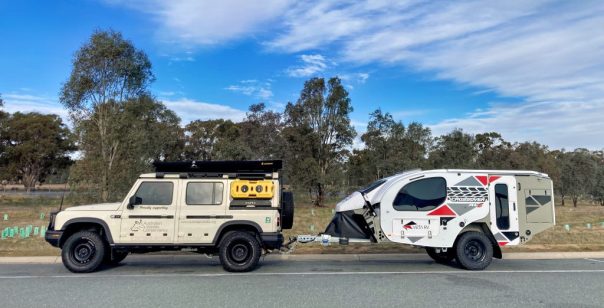A few images from the recent Big Bus trip around Darwin.
Sitting on a park bench about 2 meters away from several red tailed black cockatoos feeding was special.















A few images from the recent Big Bus trip around Darwin.
Sitting on a park bench about 2 meters away from several red tailed black cockatoos feeding was special.














The van has been picked up and placed in storage. Trip here (The Doc started the data logger at Benalla).

Van on the way home.


No trips for the moment as lots of medical appointments over the next few months.
The round trip was 2,675kms and The Doc was tired for a couple of days after the trip. He thinks it was the amount of kilometers over those days – more than he usually does when traveling in that period. Another thing The Doc needs to factor in after the accident. The list just seems to grow and grow.








The trip can be tracked here. If the track does not properly display, select a time period on the top right of the screen, The Doc suggest 7 days. See the screenshot below, from the SPOT ON tacker site.


On the recent visit to the Northern Territory, The Doc visited the George Brown Darwin Botanic Gardens. The Botanic Gardens have a large selection of boababs trees from Madagascar. Here is selection of 4 species.












The longest report The Doc has done for an AWC Supporter’s Event. Lots of photos and an amazing experiences here.










At Bullo River Station we got to see the Mighty Joab, the largest boab The Doc has seen in Australia. More coming in the full Bullo River Station Report.




The Doc has drafted a page about his AWC adventures over the last 15 years. Over 30 sanctuary visits to volunteer, visit or take part in Supporter’s Events. Over 20 different sanctuaries visited all over Australia.
Plus, other AWC activities, like scanning slides, getting stickers on The Doc’s car and meets ups in the field. Still a work in progress, but lots of links and images here.
Bullo River Station report still being worked on. It will be added when complete. Some amazing images from that trip.
The Doc just mapped the images he took on Bullo River Station, as he selects some images for the forthcoming Bullo River Station Report. The very rough figure 8 was the helicopter trip. The big muddy river on the top right is the Victoria River. The Bullo River is covered by pink picture makers coming out of the Victoria River, top right also.


At the recent AWC Supporter Event at Bullo River Station we had small groups doing guided tours along the Bullo River, with a cold breakfast supplied (fresh fruit, quiche, yogurt, nuts, freshly squeezed OJ and muffins).
A few images are below. Click on an image to see a slideshow at full size. Enjoy the beauty of God’s creation.
The Doc is still writing the longer Bullo report.









The Doc took the Sony A9III out into the field for its first use. A few test photos on the ground at Bullo River Station, but the first proper test was the helicopter trip around the property. Report coming, with images, in due course.
With any new camera there is learning curve concerning how to best set it up and use it. A few mistakes were made and a few images lost, but no disaster. The Doc was worried at setting the frames per second (fps) too low in the helicopter, but the culling of images showed that not to be the case.
The camera can go up to 120 fps in High Plus speed mode. 120 fps was not used on the helicopter, but it was on the Corroboree Billabong cruise, when The Doc had limited time to get images, including the old saltwater crocodile. The camera was amazing and this feature will come in useful for action shots. You must use it sparingly and cull images cull images, hard.
Having visited Corroboree Billabong before with Wetland Cruises, The Doc knew it would be a good day trip out of Darwin. Corroboree Billabong has the highest concentration of crocs in the world. It has both fresh water and salt water crocodiles. Corroboree Billabong is located on the Mary River floodplain.
The landscape images were being taken by the Sony P&S, not the A9III, as the A9III was fitted with a 135mm lens.
The harsh light in the middle of the day meant no brilliant images from the billabong.
The roadtrains and billabong images first, followed by the crocs close ups.
















Now the croc images. The croc was getting close to 5 metres in length, so very dangerous to the stupid and unwary.








You must be logged in to post a comment.